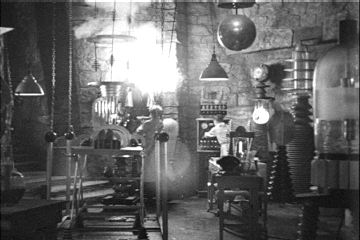

map function:
val triple = (x : Int) => 3 * x (1 to 10).map(triple) // yields 3 6 9 12 ... 30
IntList[Int], function (Int) => Int, returns List[Int]
def map(lst : List[Int], fun: (Int) => Int) : List[Int] =
Nil, otherwise apply fun to lst.head and use recursion:
if (lst.isEmpty) Nil else fun(lst.head) :: map(lst.tail, fun)
map(List(1, 2, 3), (x : Int) => 3 * x)
What should
mapdo with each element inlst?
val n = 3 val fun = (x : Int) => n * x // What is fun(2)?
n is not defined in the scope of fun, but that is ok. In the body of a function, you can use any variable from the enclosing scope.n is immutable, so it will always be 3. But consider this:
def multiplyBy(n : Int) = (x : Int) => n * x
val quadruple = multiplyBy(4) // the function (x : Int) => 4 * x
quadruple(5) // yields 20
multiplyBy yields a different function.ndef twice(f: (Int) => Int, x : Int) = f(f(x)) twice((x) => 42 * x, 3) // Ok, x : Int is inferred from context
List(1, 2, 3).map((x) => x * x)
List[A].map(f : (A) => B) : List[B] A is Int since List(1, 2, 3) is a List[Int]f must be (Int)=> . . .x must be Int() around a single inferred parameter
List(1, 2, 3).map(x => x * 0.5)
List(1, 2, 3).sortWith((x, y) => x > y)
// need () with 2 or more parameters, or with 0 parameters
_ for a parameter that only occurs once in the body
List(1, 2, 3).map(_ * 0.5) List(1, 2, 3).sortWith(_ > _)
_ can't be in an expression that is passed to another function.
List(1, 2, 3).map(math.sqrt(_ + 1)) // Error—Can't pass_ + 1tomath.sqrtList(1, 2, 3).map(math.sqrt(_) + 1) // Ok
map produces a list of values.def sum(List[Int] lst): Int
def reduce(lst: List[Int], op: (Int, Int) => Int): Int
val result = reduce(lst, (x, y) => x + y)
val result = reduce(lst, _ + _)
def reduce(lst: List[Int], op: (Int, Int) => Int): Int = if (lst.tail.isEmpty) lst.head else op(lst.head, reduce(lst.tail, op))

lab3/report.txt inside the Git repo. Include the coder's name in the report! val isEven = (x : Int) => x % 2 == 0
(1 to 10).filter(isEven). As always, don't type the period, but type ENTER. What do you get? filter does.val gen = new scala.util.Random gen.nextInt(10) gen.nextInt(10)
randList(len : Int, n : Int) : List[Int] that makes a list of length len of random integers between 0 and n - 1. For example, randList(5, 10) might yield a list of numbers 5 1 2 0 9. Define randList as a recursive function. What is the code of your function?
Hint: If len is 0, the result is nil. Otherwise, it is gen.nextInt(n) :: something. What is your definition?
Note: You need not define gen. You already defined it in part 1. Just use it.
randList(5, 1000)? For randList(1000, 5)?randList a closure? greaterThan100(lst : List[Int]) that returns only those integers in lst that are greater than 100. Don't use recursion; simply call filter with an appropriate function:
def greaterThan100(lst : List[Int]) = {
val fun = ... // your work
lst.filter(fun) // NOTE: The last expression in a { ... } is its value
}
What is your function's code?
greaterThan100(randList(10, 200))? Why does that give you confidence that you implemented everything correctly? def greaterThan(n : Int, lst : List[Int]) = {
val fun = ... // your work
lst.filter(fun)
}
For example, greaterThan(50, nums) yields all values of nums > 50.
What is the code of your greaterThan function?
greaterThan(100, randList(10, 200))? fun inside greaterThan a closure?reduce(List(1,2,3,4,5), (x, y) => x - y)?reduce called reduceLeft and reduceRight. Try
(1 to 5).reduceLeft(_ - _) (1 to 5).reduceRight(_ - _)What do each of them do?
reduce to compute the decimal value. For example, List(1, 7, 2, 9) should turn into 1729. Hint: (x, y) => 10 * x + y.reduce in the lecture. Which one? Implement the other. Here is an outline:
def otherReduce(lst: List[Int], op: (Int, Int) => Int) = {
def otherReduceHelper(lst: List[Int], op: (Int, Int) => Int, partialResult: Int): Int =
if (lst.isEmpty) ... else
otherReduceHelper(..., op, op(..., ...))
otherReduceHelper(..., op, ...)
}